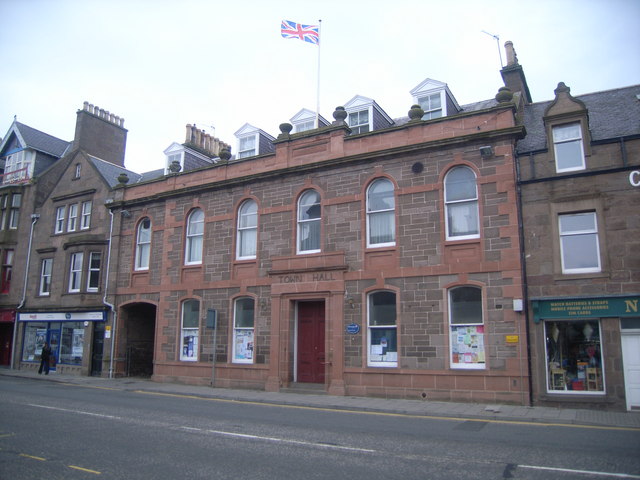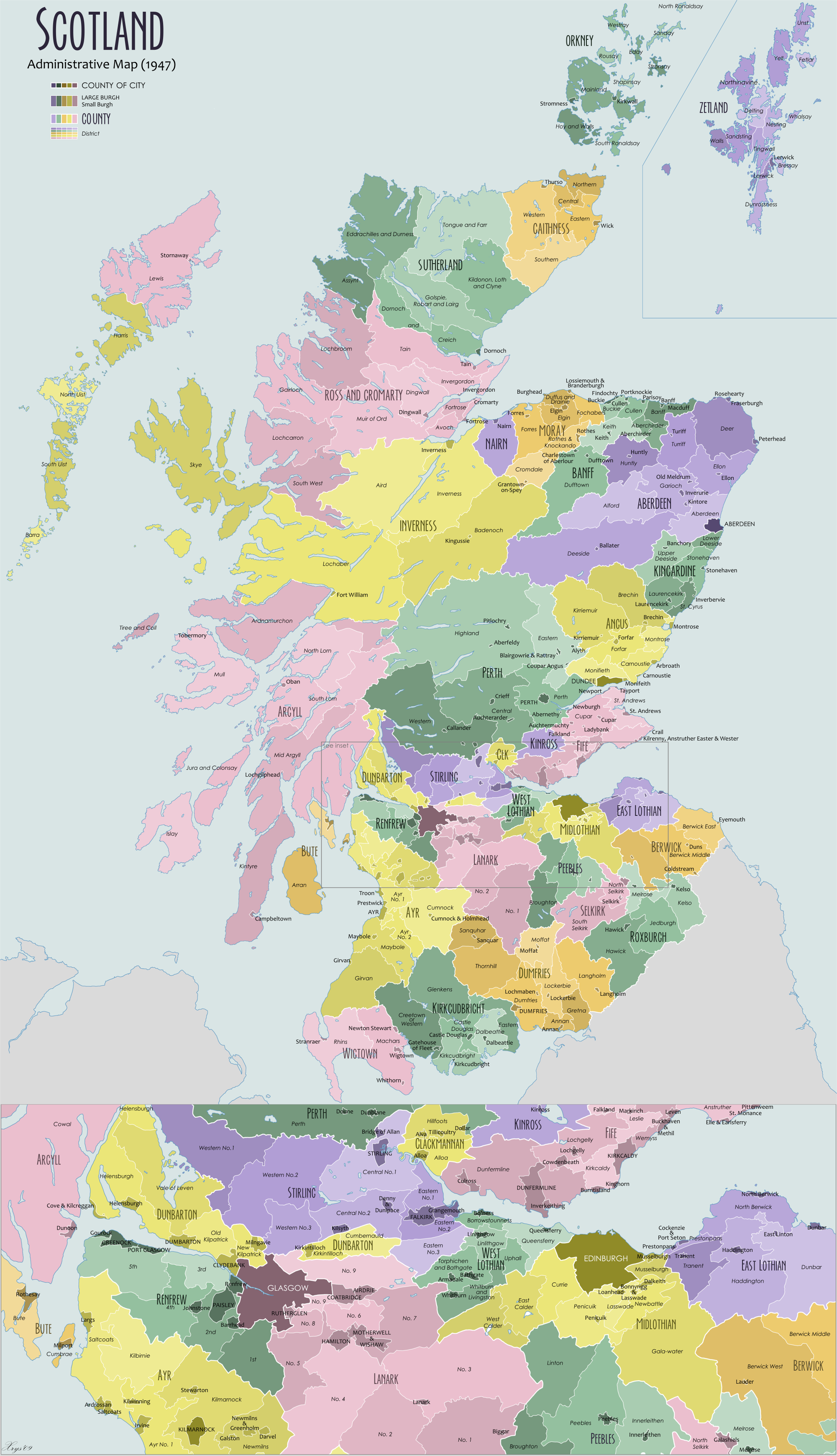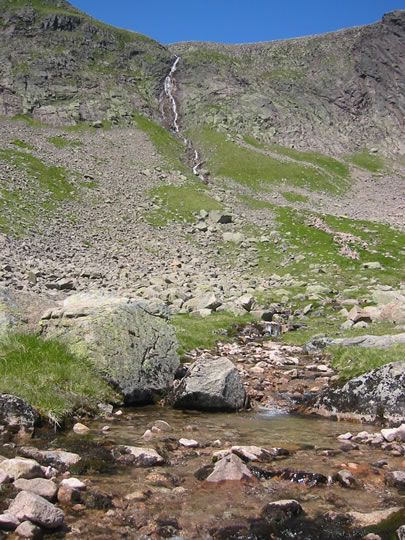|
Kincardine And Deeside
Kincardine and Deeside was one of five local government districts in the Grampian region of Scotland. Its council was based in Stonehaven. It was created in 1975 and abolished in 1996, when the area was included in the Aberdeenshire council area. History This region is rich in prehistory with numerous megalithic sites, notable in the earliest period of recorded history with several significant Roman sites. The region is also traversed by several ancient trackways across the Grampian Mountains, including the Causey Mounth and Elsick Mounth. In addition there is evidence of ancient burials from the Beaker Period. The district was created on 16 May 1975 under the Local Government (Scotland) Act 1973, which established a two-tier structure of local government across Scotland comprising upper-tier regions and lower-tier districts. Kincardine and Deeside was one of five districts created within the Grampian region. The district covered most of the historic county of Kincardinesh ... [...More Info...] [...Related Items...] OR: [Wikipedia] [Google] [Baidu] |
Stonehaven
Stonehaven ( ) is a town on the northeast coast of Scotland, south of Aberdeen. It had a population of 11,177 at th2022 Census Stonehaven was formerly the county town of Kincardineshire, succeeding the now abandoned town of Kincardine, Aberdeenshire, Kincardine. It is currently administered as part of Aberdeenshire. The town is known in the local Doric Scots, Doric dialect as ''Steenhive'' () and is nicknamed ''Stoney''. Pre-history and archaeology Stonehaven is the site of prehistoric events evidenced by finds at Fetteresso Castle and Neolithic pottery excavations from the Spurryhillock area. In 2004, archaeological work by CFA Archaeology, in advance of the building of the Aberdeen to Lochside Natural Gas Pipeline, found two short Cist, cists burials containing cremated remains to the southwest of Stonehaven. Radiocarbon dating put the burials in the first half of the 2nd millennium BC, which was the Early Bronze Age in Scotland. The burials contained stone tool artifacts ... [...More Info...] [...Related Items...] OR: [Wikipedia] [Google] [Baidu] |
List Of Local Government Areas In Scotland (1930–1975)
This is a list of local government areas in Scotland from 1930 to 1975. The list contains the areas of local authorities as created by the Local Government (Scotland) Act 1929, as amended by the Local Government (Scotland) Act 1947. These areas were abolished in 1975 by the Local Government (Scotland) Act 1973 when a system of regions and districts replaced them. The district in which the abolished area was included is indicated. Background From 1930 to 1975 there were the following types of local government areas in Scotland: County-level authorities *Counties of cities: These were the four largest burghs: they exercised the powers of both a county council and burgh. As such they were effectively unitary authorities. They were governed by city corporations headed by a lord provost. *Counties: There were thirty-three counties covering the area outside the counties of cities. In the case of twenty-nine counties they were governed by a county council consisting partly of members ... [...More Info...] [...Related Items...] OR: [Wikipedia] [Google] [Baidu] |
Banff And Buchan
Banff and Buchan is a committee area of the Aberdeenshire Council, Scotland, covering an area along the northern coast of the council area. The main towns are Banff and Fraserburgh. Fishing and agriculture are important industries, together with associated processing and service activity. Banff and Buchan was also the name of a district of Grampian Region between 1975 and 1996. The district covered a much larger area than the modern committee area. Its council was based in Banff. History The area has a long history of human occupation. Prehistoric features include a large long barrow at Longman Hill south-east of Macduff, as well as Cairn Lee to the west of Longman Hill. Local government district The Banff and Buchan local government district was created on 16 May 1975 under the Local Government (Scotland) Act 1973, which established a two-tier structure of local government across Scotland comprising upper-tier regions and lower-tier districts. Banff and Buchan was one o ... [...More Info...] [...Related Items...] OR: [Wikipedia] [Google] [Baidu] |
St Cyrus
St Cyrus or Saint Cyrus (), formerly Ecclesgreig (from ) is a village in the far south of Aberdeenshire, Scotland. General information Traditional salmon fishing with nets is still conducted from St Cyrus beach. Two ice houses that used to provide ice for packing salmon before transporting to market can still be seen. One is to the north end of the beach on the donkey track just below the Woodston Fishing Station, the other is further south next to Kirkside [this is now a private dwelling], not far from the St Cyrus National Nature Reserve Visitor Centre. St Cyrus National Nature Reserve St Cyrus National nature reserve (Scotland), National Nature Reserve (NNR) is situated between the village of St Cyrus and the North Sea. The Reserve comprises of coastal habitat in the northern third of Montrose Bay and is managed by Scottish Natural Heritage (SNH). The cliffs and dunes provide a nationally important habitat for flowering plants and insects, many of which grow at their nort ... [...More Info...] [...Related Items...] OR: [Wikipedia] [Google] [Baidu] |
Cove Bay
Cove Bay, known locally as Cove, is a suburb on the south-east edge of Aberdeen, Scotland. Today Cove is home to around 8,000 people. It is a popular residential location owing to its village-like status. It is a quiet suburb at the Southern edge of Aberdeen City and in 2020 won the Silver Gilt award for Scotland in Bloom. Altens and Tullos Industrial Estates offer nearby employment opportunities. There is also easy access to the new AWPR A90. History Cove Bay is situated to the east of the ancient Causey Mounth, which road was built on high ground to make passable this only available medieval route from coastal points south from Stonehaven to Aberdeen. This ancient trackway specifically connected the River Dee crossing (where the Bridge of Dee is located) via Portlethen Moss, Muchalls Castle and Stonehaven to the south. The route was that taken by William Keith, 7th Earl Marischal and the Marquess of Montrose, who led a Covenanter army of 9000 men in the battle of the C ... [...More Info...] [...Related Items...] OR: [Wikipedia] [Google] [Baidu] |
City Of Aberdeen
Aberdeen ( ; ; ) is a port city in North East Scotland, and is the third most populous Scottish city. Historically, Aberdeen was within the historic county of Aberdeenshire, but is now separate from the council area of Aberdeenshire. Aberdeen City Council is one of Scotland's 32 local authorities (commonly referred to as ''councils''). Aberdeen has a population of for the main urban area and for the wider settlement including outlying localities, making it the United Kingdom's 39th most populous built-up area. Aberdeen has a long, sandy coastline and features an oceanic climate, with cool summers and mild, rainy winters. Aberdeen received royal burgh status from David I of Scotland (1124–1153), which transformed the city economically. The traditional industries of fishing, paper-making, shipbuilding, and textiles have been overtaken by the oil industry and Aberdeen's seaport. Aberdeen Heliport is one of the busiest commercial heliports in the world, and the seaport ... [...More Info...] [...Related Items...] OR: [Wikipedia] [Google] [Baidu] |
Nigg, Aberdeen
Nigg is an area of Aberdeen, Scotland, south of the River Dee. It has a population of 16,400 (2019 estimate). The area has a bay known as the ''Bay of Nigg'' or Nigg Bay, immediately south of a coastal golf course, and a farm that is also a visitor attraction, known as Doonies Farm. History Nigg is situated somewhat to the east of the ancient Causey Mounth trackway, which route was constructed on high ground to make passable this medieval passage from coastal points south of Stonehaven to Aberdeen. This ancient passage connected the River Dee crossing (where the present Bridge of Dee is situated) via Muchalls Castle and Stonehaven to the south. The route was that taken by William Keith, 7th Earl Marischal and the Marquess of Montrose when they led a Covenanter army of 9,000 men in the battle of the Civil War in 1638. Nigg was historically a parish in Kincardineshire. It included Altens, Cove Bay, Kincorth and Torry as well as the village of Nigg itself. Torry was transfer ... [...More Info...] [...Related Items...] OR: [Wikipedia] [Google] [Baidu] |
Lower Deeside
Lower Deeside is a region along the River Dee in Aberdeenshire and Aberdeen in Scotland. The boundaries of this area are subject to interpretation, since the usage has altered through historic times; however, the area is generally associated with the communities of Durris, Maryculter and Banchory-Devenick in the historic district of KincardineshireJ.A. Henderson, 1892 and the communities of Peterculter, Milltimber, Bieldside and Cults in Aberdeen. Ancient history Prehistoric habitation of the Lower Deeside is known through archaeological sites such as Balbridie. Roman legions marched from Raedykes to Normandykes, marching through what is now termed the Lower Deeside, as they sought higher ground evading the bogs of Red Moss and other low-lying mosses associated with the Burn of Muchalls. That march used the Elsick Mounth, one of the ancient trackways crossing the Grampian Mountains The Grampian Mountains () is one of the three major mountain ranges in Scotland, that toget ... [...More Info...] [...Related Items...] OR: [Wikipedia] [Google] [Baidu] |
Laurencekirk
Laurencekirk (, , ), locally known as Lournie or simply 'The Kirk', is a small town in the historic county of Kincardineshire, Scotland, just off the A90 Dundee to Aberdeen main road. It is administered as part of Aberdeenshire. It is the largest settlement in the Howe o' the Mearns area and houses the local secondary school; Mearns Academy, which was established in 1895 and awarded the Charter Mark in 2003. Its old name was Conveth, an anglification of the Gaelic ''Coinmheadh'', referring to an obligation to provide free food and board to passing troops. Laurencekirk is in the Howe of the Mearns, a wide valley between the Hill of Garvock and the Cairn O' Mount. The famous landmark of the Johnston Tower can be seen on the peak of the Garvock. Laurencekirk was, in the past, known for making snuff boxes with a special type of airtight hinge (known as a "Laurencekirk hinge") invented by James Sandy. The Laurencekirk Golf Club, now defunct, was founded in the early 1900s bu ... [...More Info...] [...Related Items...] OR: [Wikipedia] [Google] [Baidu] |
Inverbervie
Inverbervie (), also known simply as Bervie, is a small town on the north-east coast of Scotland, south of Stonehaven, in the Kincardineshire, Mearns. Etymology The name comes from Scottish Gaelic, Gaelic and means "mouth of Bervie Water". Historical forms, such as ''Haberberui'', recorded in 1290, show that the Gaelic element ''inbhir'', meaning "river mouth", has succeeded the original Common Brittonic, Brittonic element ''aber'', with the same meaning (cf. Welsh language, Welsh ''aber''). History Inverbervie appears in recorded history, written history at least as far back as the 12th century AD; in a document relating to Arbroath Abbey, Simon of Inverbervie is noted as having witnessed a charter transferring the lands of Balfeith to the Abbey. The settlement was formerly a royal burgh from 1342 to 1975 and a parliamentary burgh from 1708 to 1950, the former status being conferred by David II of Scotland for hospitality he and his Queen received when shipwrecked there the ... [...More Info...] [...Related Items...] OR: [Wikipedia] [Google] [Baidu] |
Banchory
Banchory (, , ) is a burgh or town in Aberdeenshire, historically in Kincardineshire, Scotland. It is about west of Aberdeen, near where the Feugh River meets the River Dee. Prehistory and archaeology In 2009, a farmer discovered a short cist burial to the east of the town. Archaeologists were called into excavate it and they found that it was a burial from the Beaker culture. Radiocarbon dating put the burial at sometime between 2330 and 2040 BC. Stable isotope analysis of the human remains indicated that he or she grew up on basalt geology, like that of the region, or on chalk, meaning they were either local or could have come from another place, like Yorkshire. Residue analysis of the Beaker pot found in the burial established that it had held either butter or milk. History The name is thought to be derived from an early Christian settlement founded by St Ternan. It is claimed that Ternan was a follower of St Ninian. Tradition has it that he established his settl ... [...More Info...] [...Related Items...] OR: [Wikipedia] [Google] [Baidu] |
River Dee, Aberdeenshire
The River Dee () is a river in Aberdeenshire, Scotland. It rises in the Cairngorms and flows through southern Aberdeenshire to reach the North Sea at Aberdeen. The area it passes through is known as Deeside, or Royal Deeside in the region between Braemar and Banchory because Queen Victoria came for a visit there in 1848 and greatly enjoyed herself. She and her husband, Prince Albert, built Balmoral Castle there which replaced an older castle. Deeside is a popular area for tourists, due to the combination of its scenery and historic royal associations. It is part of the Cairngorms National Park, and the Deeside and Lochnagar National Scenic Area. The Dee is popular with anglers and is one of the most famous salmon fishing rivers in the world. The New Statistical Account of Scotland attributed the name Dee as having been used as early as the second century AD in the work of the Alexandrian geographer Claudius Ptolemy, as ''Δηοῦα'' (=Deva), meaning 'goddess'. This ind ... [...More Info...] [...Related Items...] OR: [Wikipedia] [Google] [Baidu] |







